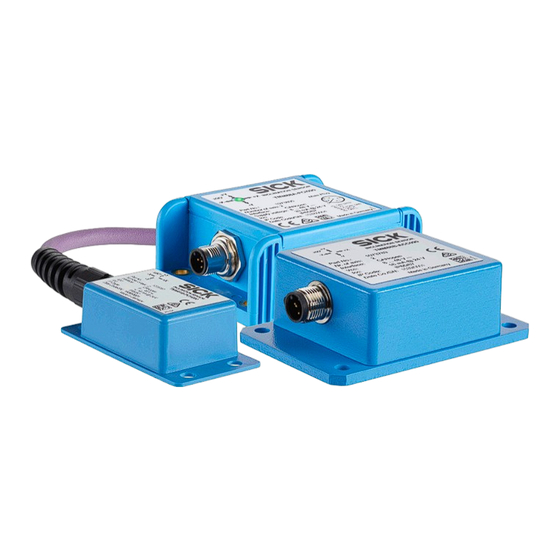
Summarization of Contents
1 About This Document
1.1 Function of this document
Explains the purpose and scope of the operating instructions.
1.2 Explanation of Symbols
Defines warning symbols and their meanings for safety.
2 Safety Information
2.1 Intended Use
Specifies the approved applications for the inclination sensors.
2.2 Incorrect Use
Highlights prohibited uses and potential hazards.
2.3 Personnel Qualification
Outlines the required qualifications for personnel working with the device.
4 Technical Data
4.1 TMS88A/TMM88A Technical Data
Technical specifications for TMS88A/TMM88A inclination sensors.
4.2 TMS88B/TMM88B Technical Data
Technical specifications for TMS88B/TMM88B inclination sensors.
4.3 TMS88D/TMM88D Technical Data
Technical specifications for TMS88D/TMM88D inclination sensors.
4.4 TMS61B/TMM61B Technical Data
Technical specifications for TMS61B/TMM61B inclination sensors.
5 Transport and Storage
5.1 Transport Guidelines
Guidelines for safe transport of the inclination sensors.
5.2 Transport Inspection
Procedures for checking delivery for damage and completeness.
5.3 Storage Recommendations
Recommended conditions for storing the inclination sensors.
8 Description of Operation
8.1 Function Overview
Overview of the inclination sensors' operational functionalities.
9 CANopen Interface
9.1 Communication Profile
Explanation of the CANopen communication protocol and OSI model.
9.2 Node IDs and COB IDs
Details on CANopen node IDs and Communication Object Identifiers (COB IDs).
9.3 Layer Setting Services (LSS)
Configuration of node ID and baud rate using LSS.
9.4 Network Management: NMT
Initialization, monitoring, and control of CANopen nodes.
9.5 Service Data Objects (SDO)
Channel for transmitting device parameters and status queries.
9.6 Process Data Objects (PDO)
Used for rapid data exchange of real-time data.
9.7 Object Directory
Contains all data objects accessible from outside the device.
9.8 Error Messages: Emergency
Transmission of internal device and CAN communication errors.
9.9 Automatic Baud Rate Detection
Automatic setting of the sensor's baud rate to the network's rate.
9.10 Status LED
Indicates device status and CAN communication errors via LEDs.

















Need help?
Do you have a question about the TMS88B and is the answer not in the manual?
Questions and answers